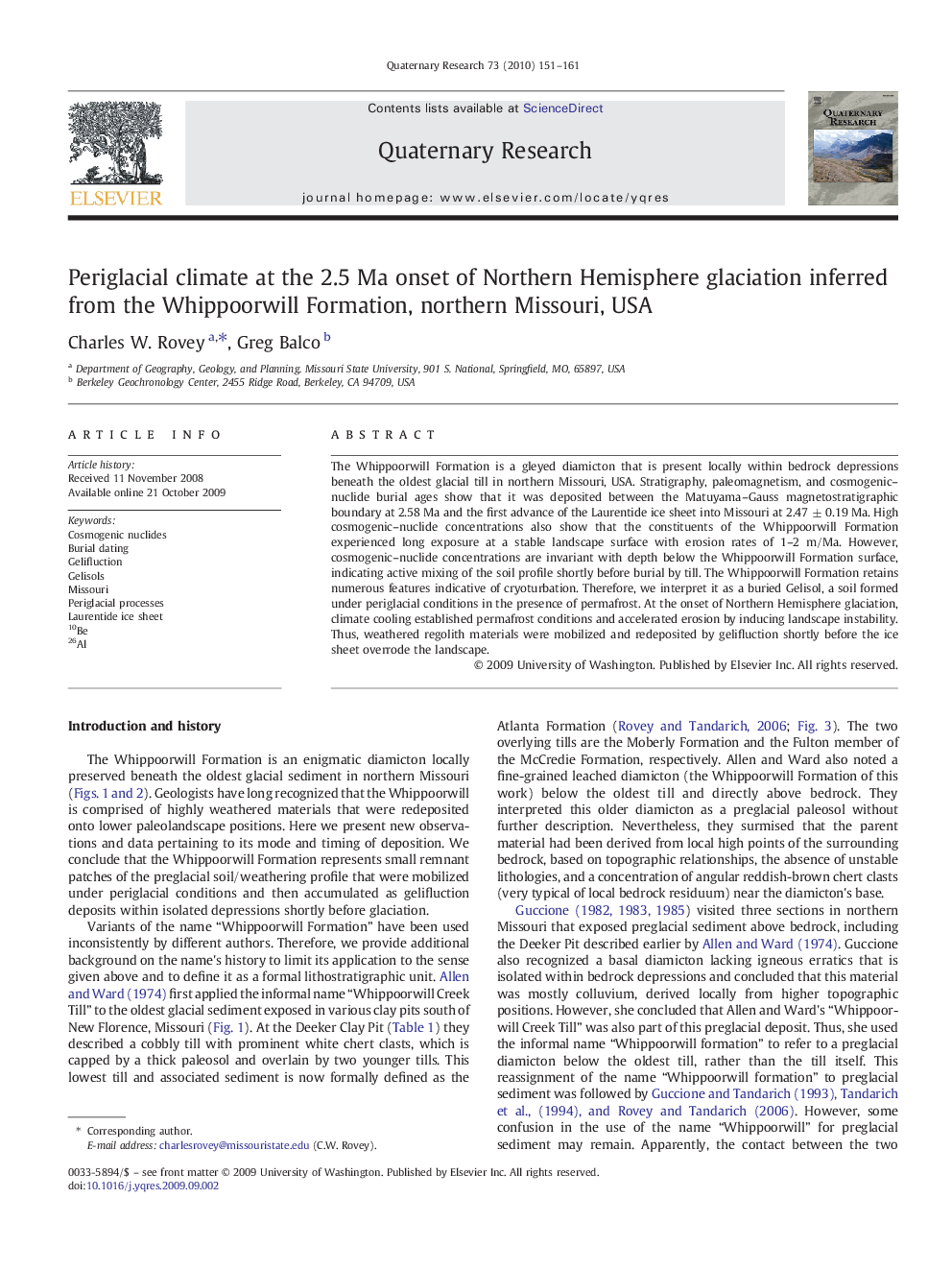| Article ID | Journal | Published Year | Pages | File Type |
|---|---|---|---|---|
| 1045806 | Quaternary Research | 2010 | 11 Pages |
Abstract
The Whippoorwill Formation is a gleyed diamicton that is present locally within bedrock depressions beneath the oldest glacial till in northern Missouri, USA. Stratigraphy, paleomagnetism, and cosmogenic-nuclide burial ages show that it was deposited between the Matuyama-Gauss magnetostratigraphic boundary at 2.58 Ma and the first advance of the Laurentide ice sheet into Missouri at 2.47 ± 0.19 Ma. High cosmogenic-nuclide concentrations also show that the constituents of the Whippoorwill Formation experienced long exposure at a stable landscape surface with erosion rates of 1-2 m/Ma. However, cosmogenic-nuclide concentrations are invariant with depth below the Whippoorwill Formation surface, indicating active mixing of the soil profile shortly before burial by till. The Whippoorwill Formation retains numerous features indicative of cryoturbation. Therefore, we interpret it as a buried Gelisol, a soil formed under periglacial conditions in the presence of permafrost. At the onset of Northern Hemisphere glaciation, climate cooling established permafrost conditions and accelerated erosion by inducing landscape instability. Thus, weathered regolith materials were mobilized and redeposited by gelifluction shortly before the ice sheet overrode the landscape.
Keywords
Related Topics
Physical Sciences and Engineering
Earth and Planetary Sciences
Geology
Authors
Charles W. Rovey, Greg Balco,
